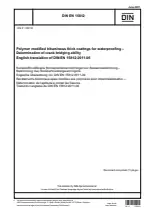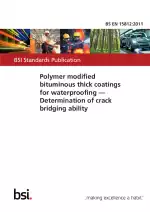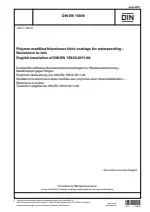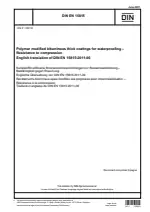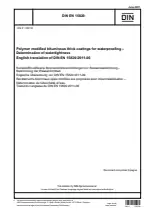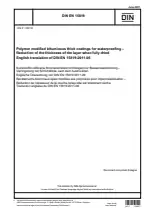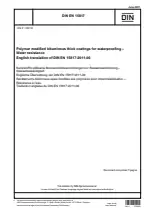Polymer Modified Bituminous Thick Coatings for Waterproofing - Determination of Crack Bridging Ability
Also Known As:
DIN EN 15812 standard provides two methods (method A and method B) for evaluating the crack bridge properties of polymer modified bituminous thick coatings used for waterproofing purposes. These test methods can be applied interchangeably to assess the ability of these coatings to bridge and resist cracks.
The standard ensures that these coatings meet the specified requirements regarding crack bridging abilities, which is essential for their effective performance in waterproofing applications. By defining the testing procedures, the standard provides a reliable and standardized approach for manufacturers, contractors, and regulatory bodies to evaluate and compare the crack bridging ability of different polymer modified bituminous thick coatings.
The crack bridging ability of these coatings is crucial to ensure their long-term durability and effectiveness as waterproofing materials. This standard helps in ensuring that the coatings can withstand the stresses caused by cracks and maintain their functionality without compromising the underlying surfaces' water resistance.
| Descriptors | Bitumens, Bituminous products, Bridgings, Coatings, Construction, Construction materials, Crack tests, Cracking resistance, Definitions, Flaws, Flexibility, Mechanical properties of materials, Plastics, Polymer bitumen, Polymers, Properties, Protection against water from the ground, Resistance, Resistance to crack formation, Test specimens, Testing, Testing devices, Visual inspection (testing), Checking equipment |
| ICS Codes | 91.100.50 - Binders. Sealing materials |
| Language(s) | English |
| File Size | 419.8 KB |

